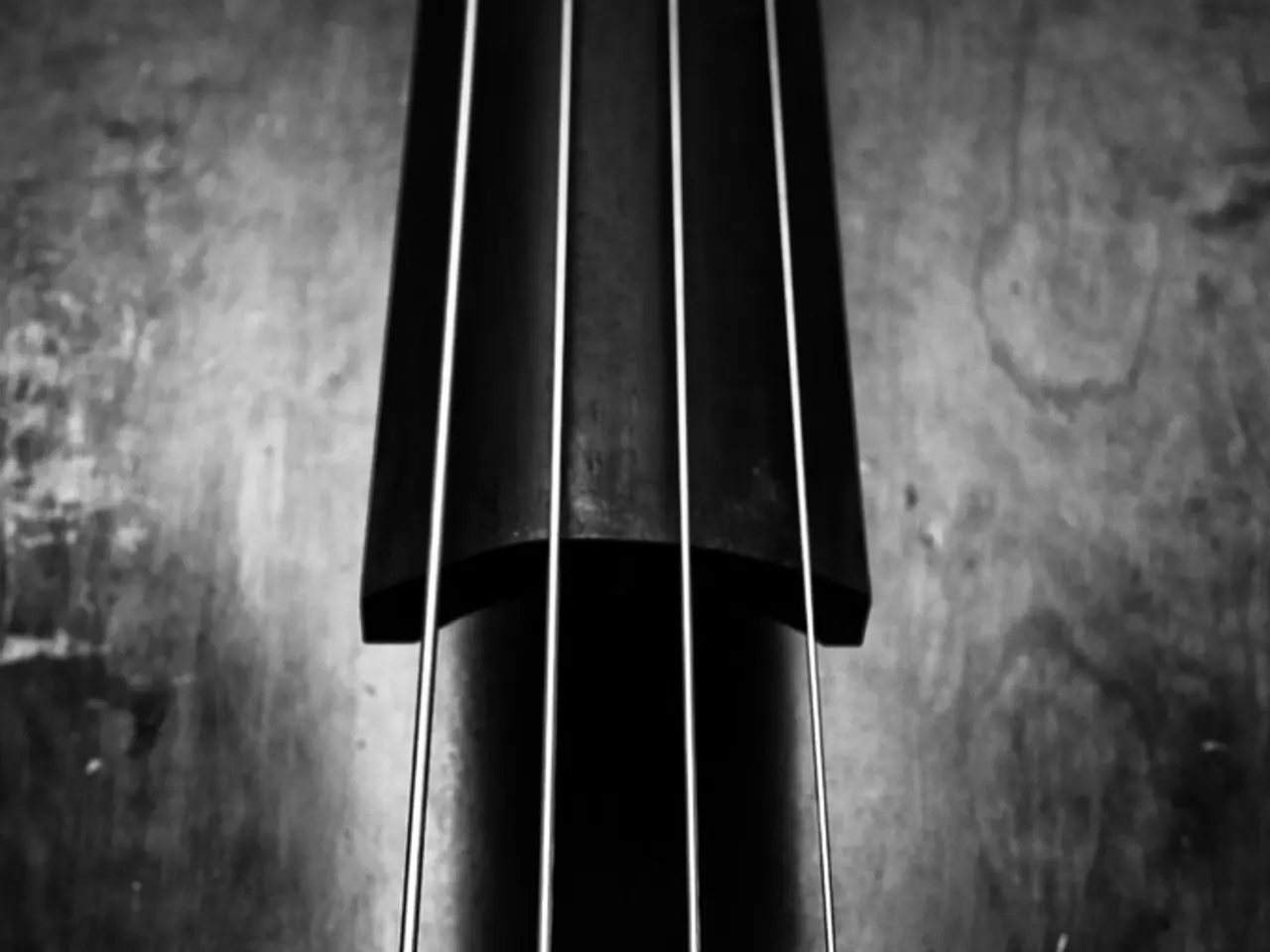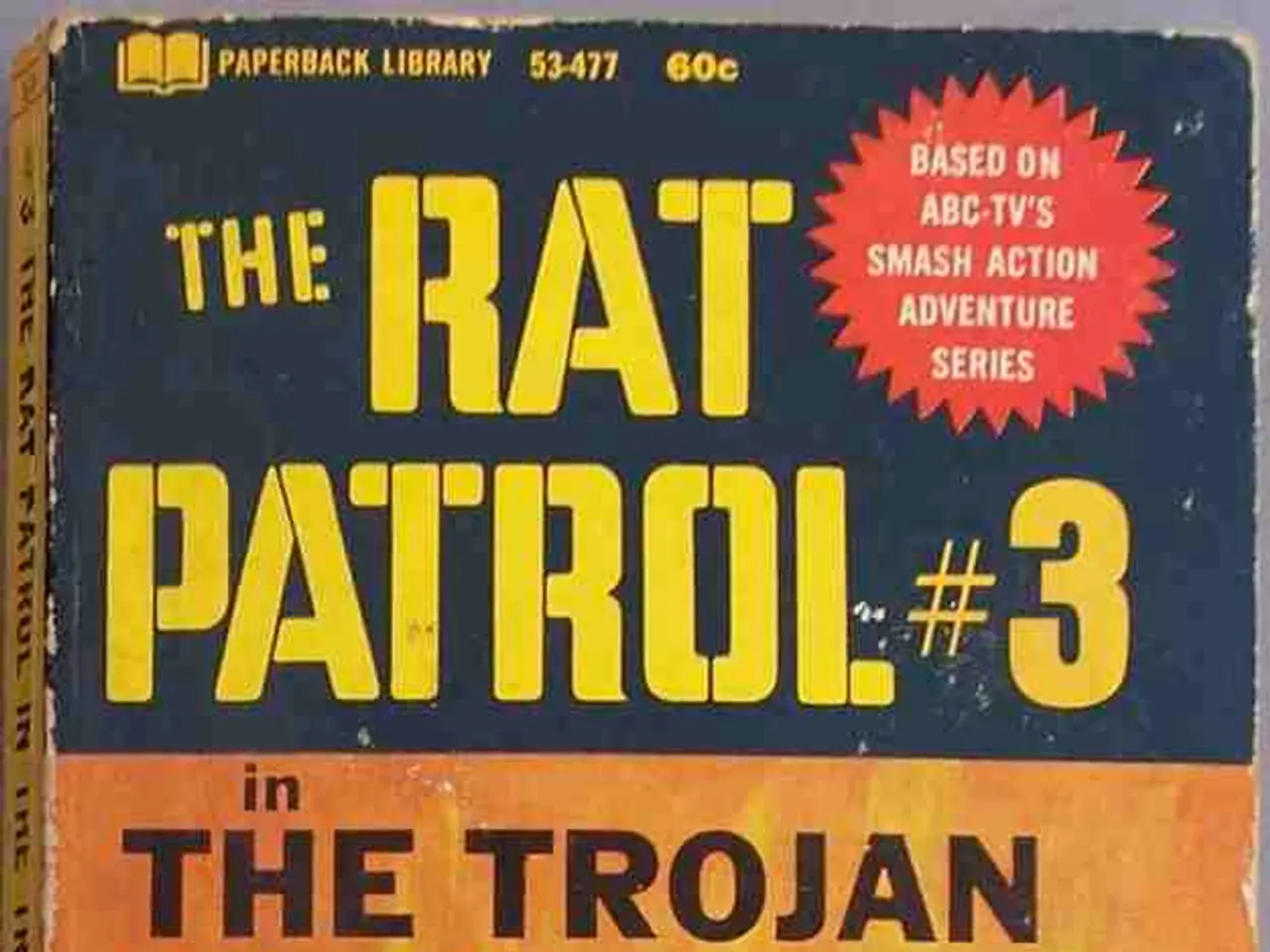Music Theory Explained: Understanding Suspended (Sus) Chords for Musicians
In the world of music, suspended chords, or sus chords, offer a unique twist on traditional chord structures. These chords delay the listener's expectation of hearing the third, creating a feeling of anticipation and tension. Let's delve into the intriguing world of GM7sus (Gmaj7sus4) and its uses in various genres.
What is a GM7sus / Gmaj7sus4 chord?
- Notes in Gmaj7sus4: G (root), C (4th/sus4), D (5th), F# (major 7th) (Instead of the major 3rd B in a Gmaj7 chord, the 3rd is replaced by the 4th, C.)
- Sound characteristics:
- Ambiguous tonal quality, because the 3rd (which defines major or minor) is suspended/replaced by the 4th.
- Lush, open, and somewhat unresolved yet sophisticated sound.
- The major 7th (F#) adds a sweet, dreamy, jazz-influenced color.
- The suspended 4th creates tension that tends to want to resolve to the major 3rd (C resolving to B).
Characteristics
- Harmonic tension and resolution: The suspended 4th naturally creates mild tension and a floating feeling, due to the clash between the 3rd (missing) and the 4th (added). The major 7th adds a smooth and jazzy character.
- Ambiguity: Because the 3rd is omitted and replaced with the 4th, the chord holds some open-ended, coloristic quality, not strongly major or minor.
- Colorful and atmospheric: The chord is often used for its rich, lush texture and emotional ambiguity.
Uses in Different Genres
- Jazz
- Very common as a color chord or passing chord.
- Used in ballads, bossa nova, or modal jazz to create sophisticated harmony.
- Frequently appears in chord extensions and substitutions.
- Example usage: as a IVmaj7sus4 chord or as a tonic with a suspended flavor.
- Fusion / Contemporary / Progressive Rock
- Adds complexity and color to chord progressions.
- Used to create dreamy or ethereal textures.
- Popular in guitar voicings involving open strings and lush pads on keyboard.
- Pop / R&B / Neo-Soul
- Used to give a modern, chill, or soulful vibe.
- Can soften progressions and add emotional depth.
- Sometimes employed in intros, bridges, or as passing chords.
- Folk / Acoustic / Singer-Songwriter
- The suspended 4th gives an open and ringing sound on acoustic guitar, useful for gentle or reflective moods.
- Occasionally used as a variant of major 7th chords to add interest.
- Film / Ambient / Soundtrack Music
- Effective for atmospheric and open-ended tonalities.
- Adds a dreamy or unresolved feeling suitable for emotional scenes.
Summary
| Feature | Description | |------------------|-----------------------------------------------------| | Notes | G - C (4th) - D (5th) - F# (maj7th) | | Character | Open, ambiguous, lush, suspended tension | | Harmonic Role | Color chord, creates tension combining sus4 + maj7 | | Resolution | Typically resolves C (4th) → B (3rd) to Gmaj7 | | Common in Genres | Jazz, fusion, pop, R&B, ambient, folk | | Typical Use | Passing chord, texture/atmosphere, chord substitution|
If you're experimenting with songwriting or arranging, try using the Gmaj7sus4 to replace a standard Gmaj7 for a more textured, airy, or unresolved sound. Listen for how it moves when resolved to the typical Gmaj7, or how it fits in modal or tonal landscapes.
If you'd like, I can help you with guitar or piano voicings for this chord or suggest chord progressions that include it!
Sus chords, not limited to GM7sus, add lushness and avoid "closure," useful in soundtrack, ambient music, and modern jazz. They are widely used in various genres such as Pop, Rock, Folk, Jazz, Gospel & Soul, Classical, and Modern Worship music.
A Sus2 chord has the formula root, major second, perfect fifth (e.g., Csus2 = C, D, G). Sus2 and sus4 create openness, brightness, or a floating feeling. "Free Fallin'" uses Csus4, while "Let It Be" employs G7sus4.
Understanding how sus chords work and where to use them can greatly expand a musician's creative and interpretive vocabulary. The suspended note (2 or 4) wants to resolve to the third, making them ideal for melodic or bass-line movement. They are great for delaying or preparing a cadence.
Sus chords are popular in jazz, fusion, and modern pop for their color and tension. Notations for sus chords can be "sus" or "sus2/sus4." Classics like "Naima" by John Coltrane and "Blue in Green" by Miles Davis use extended and suspended harmonies. "Blue in Green" uses Gmaj7sus4.
Remember, sus chords sound neither major nor minor due to their ambiguous quality. They are an essential addition to any musician's chord palette, offering a wealth of creative possibilities.
- The lush and open sound of the Gmaj7sus4 chord, found in pop-culture music, adds a dreamy, jazz-influenced color particularly useful in Pop and R&B genres.
- In a film or soundtrack setting, this suspended chord can effectively create atmospheric and open-ended tonalities, suitable for emotional scenes.







